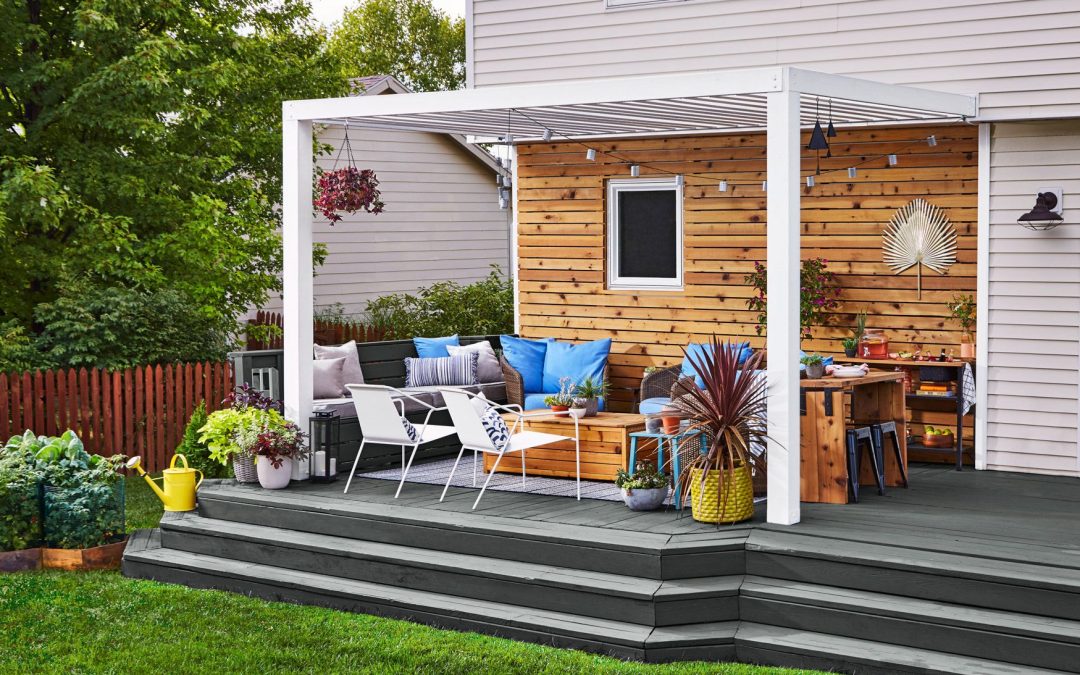Decking construction is a popular method for creating attractive and functional outdoor spaces. Whether attached to a house or freestanding, decks offer a versatile and enjoyable area for relaxation, entertainment, and outdoor activities. We will explore the key aspects of decking construction, including materials, design considerations, and the construction process.
Materials for Decking Construction:
Wood: Wood is a traditional and widely used material for decking construction. Popular wood options include pressure-treated lumber, cedar, redwood, and tropical hardwoods like ipe and teak. Wood provides a natural and warm aesthetic and can be stained or painted to suit individual preferences.
Composite: Composite decking is made from a combination of wood fibers and recycled plastic. It provides a low-maintenance option compared to wood since it resists rot, decay, and damage from insects. Composite decking comes in various colors and finishes, providing a durable and long-lasting option.
PVC: PVC decking, crafted from polyvinyl chloride, is a synthetic material known for its exceptional resistance to moisture, stains, and fading. Decking PVC is made from polyvinyl chloride, a synthetic material that is highly resistant to moisture, stains, and fading. PVC decking requires minimal maintenance and is known for its durability and longevity.
Design Considerations for Decking:
Purpose and Function: Determine the intended purpose of the deck. Is the intended use of the deck for outdoor dining, relaxation, or recreational activities? Understanding the primary function helps determine the size, layout, and features of the deck.
Location and Orientation: Consider the location and orientation of the deck to maximize sunlight exposure, shade, and privacy. Take into account factors such as views, prevailing winds, and the relationship with the existing structures and landscape.
Size and Shape: Determine the appropriate size and shape of the deck based on available space, desired activities, and aesthetic preferences. Considerations should also be given to any local building codes or regulations regarding deck size and setbacks.
Structural Support: Ensure proper structural support for the deck. This includes determining the type of foundation, such as concrete footings or helical piles, and calculating load-bearing requirements based on the intended use and local building codes.
Decking Construction Process:
Planning and Design: Start by creating a detailed plan and design for the deck, considering all the relevant factors discussed earlier. Take measurements, sketch layouts, and consider any additional features like railings, stairs, or built-in seating.
Site Preparation: Clear the area where the deck will construct, removing vegetation, rocks, and debris. Ensure the ground is level and stable. If necessary, excavate the area and install appropriate drainage systems.
Foundation Construction: Establish the foundation of the deck, which may include digging and pouring concrete footings or installing helical piles. This provides a stable base for the deck’s structural support.
Framing: Construct the framework of the deck using pressure-treated lumber or other suitable materials. This includes building the ledger board attachment, joists, beams, and posts according to the design plan.
Decking Installation: Install the selected decking material, such as wood, composite, or PVC boards, using appropriate fasteners and spacing techniques as recommended by the manufacturer. Ensure proper ventilation and allow for expansion and contraction of the decking material.
Finishing Touches: Complete the deck by adding any desired features, such as railings, stairs, skirting, or built-in seating. Apply finishes like stains or sealants to protect and enhance the appearance of the deck.
Safety and Compliance: Ensure the deck meets all local building codes and safety regulations. This may involve inspections by local authorities to ensure structural integrity and compliance with safety standards.
Conclusion:
Decking construction offers an excellent way to create beautiful and functional outdoor spaces. By carefully considering materials and design elements, and following a systematic construction process, homeowners can enjoy a well-crafted deck that enhances their outdoor living experience. Whether for relaxation, entertainment, or adding value to the property, a well-designed and properly constructed deck provides an inviting and enjoyable space to appreciate the outdoors.

